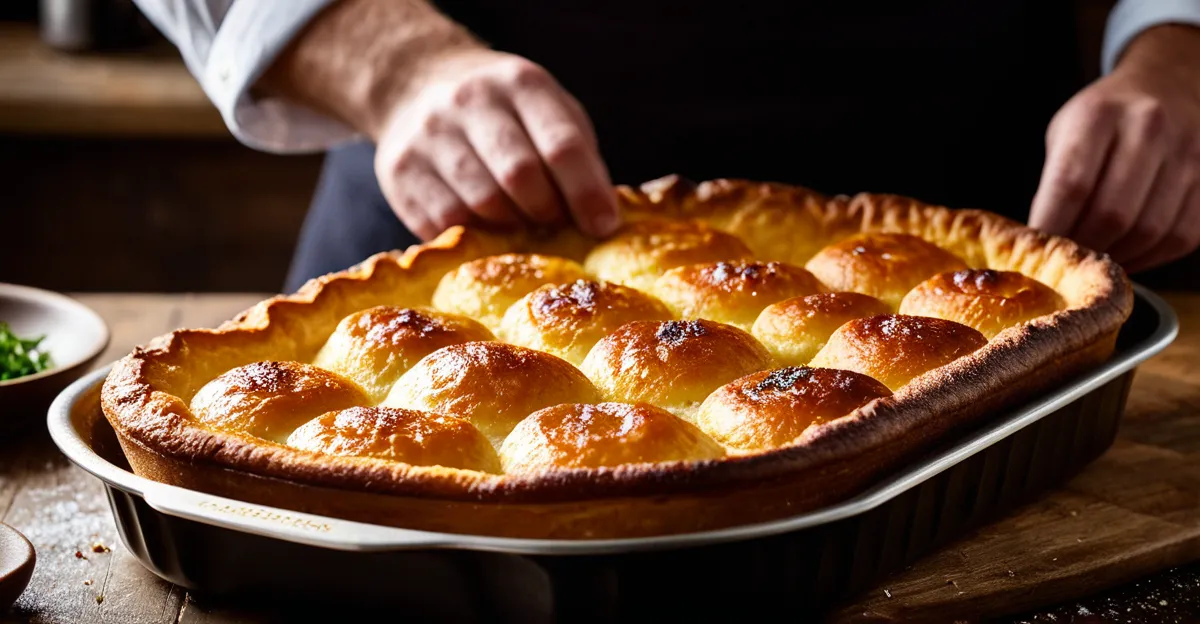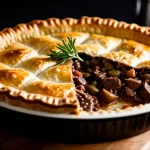Essential Ingredients and Tools for Traditional Yorkshire Pudding
Creating the perfect Yorkshire pudding starts with a precise ingredient list. The core Yorkshire pudding ingredients include:
- 140g plain flour
- 4 large eggs
- 200ml whole milk
- Pinch of salt
Accuracy in measurement ensures the batter’s consistency is just right, neither too thick nor too runny.
Also read : How do you make a flavorful steak and kidney pie?
Equally important is the quality of ingredients. Fresh eggs and full-fat milk contribute to the pudding’s rich texture and flavour. Using cold ingredients straight from the fridge can hinder the rise, so it’s best to bring eggs and milk to room temperature before mixing.
Regarding baking equipment, using a metal roasting tin or individual pudding tins works best. These conduct heat efficiently to produce that classic puff. A reliable oven thermometer can help maintain the correct temperature, essential for achieving the traditional rise. A whisk or blender is recommended to create a smooth, lump-free batter, ensuring even cooking.
Also to see : What tips can help you bake the ultimate Victoria sponge cake?
In summary, careful attention to the Yorkshire pudding ingredients and the right baking equipment lays the foundation for a successful traditional Yorkshire pudding, setting the stage for a light, airy, and perfectly risen result.
Step-by-Step Classic Yorkshire Pudding Recipe
When preparing a homemade Yorkshire pudding, following the proper steps ensures the best rise and texture. Start by mixing the Yorkshire pudding ingredients—plain flour, eggs, whole milk, and salt—into a smooth batter. Use a whisk or blender to avoid lumps, which can impede the pudding’s rise.
Resting the batter for at least 30 minutes, ideally up to an hour, at room temperature is critical. This step allows the flour to absorb the liquid fully and helps develop gluten, making the pudding both light and resilient. Rested batter also reacts better to the intense oven heat, improving the traditional Yorkshire pudding’s lift.
Before pouring the batter, preheat the oven to a high temperature (around 220°C/425°F). Place your baking equipment, such as a roasting tin or individual tins, in the oven with a small amount of oil or beef dripping until it’s smoking hot. Pouring the batter into a thoroughly preheated, sizzling fat is essential. This immediate contact causes steam to form, creating the characteristic puff and crispy edges that define the classic Yorkshire pudding texture.
Baking Methods for Optimal Rise and Texture
Achieving the perfect rise in a traditional Yorkshire pudding requires precise control over baking Yorkshire pudding conditions. The oven temperature must be high—typically around 220°C (425°F)—to generate the rapid steam expansion that causes the batter to puff. Placing the pudding tin on the middle to upper rack ensures even heat distribution, supporting a consistent rise and golden exterior.
The choice of fat plays a crucial role in texture. Beef drippings give a rich flavour and crisp, slightly caramelised edges, while vegetable oil offers a neutral taste with similar crispiness. Whichever fat is chosen, it must be heated until just smoking before adding the batter. This step maximizes steam production for the characteristic puff and crunchy crust, making it a critical Yorkshire pudding tip.
Monitoring the bake time closely is equally important. Typically, baking takes 20-25 minutes; opening the oven too early can cause the pudding to deflate. A well-baked pudding remains risen, light, and slightly chewy inside with crisp, golden edges. These methods combine to produce the ideal texture and appearance every time.
Common Mistakes to Avoid
Avoiding key Yorkshire pudding mistakes is vital for success. One frequent error is over-mixing the batter. While blending thoroughly is necessary, excessive whisking can develop too much gluten, causing a dense texture rather than a light, airy pudding.
Another common issue involves under-resting the batter. Skipping or shortening the recommended rest time prevents the flour from fully hydrating and limits gluten development, resulting in reduced rise and a heavier texture.
Using cold ingredients, especially eggs and milk straight from the fridge, disrupts batter temperature consistency. This leads to uneven cooking and poor puffing. For optimal rise, always allow ingredients to reach room temperature before mixing.
A critical mistake is opening the oven door during baking. This sudden drop in temperature lets steam escape, causing the delicate structure to collapse. Maintaining a steady high heat ensures the traditional Yorkshire pudding rises fully and stays crisp.
Finally, using incorrect fat or insufficiently hot fat impacts texture and rise. Make sure the fat is smoking hot before pouring in the batter to trigger rapid steam formation, essential for puffiness.
Addressing these common pitfalls with expert tips enhances your baking confidence and delivers perfect traditional Yorkshire pudding every time.






